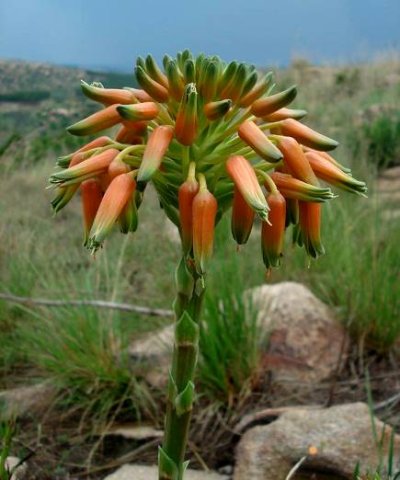Aloe ecklonis

Common in the Drakensberg, Aloe ecklonis leaves are deciduous, dying back in the cold, montane grassland winters. Some A. ecklonis plants have very broad leaves, unusual among the grass aloes. These are mainly the plants that flower salmon pink, previously known as A. boylei, or retained by some under that name.
The flowering season may tend to last longer in the colder parts of the species distribution, such as the higher elevation distribution in the Drakensberg. The short, thick stem sprouts new leaves every spring, also surviving fire.
In picture, the broad-based, acutely pointed sterile bracts on the stem are green with whitish margins. The capitate raceme bears young buds erectly, open flowers pendulous. Perianths dont remain horizontal for long, although they retain upturned tips as if aloof. The tips remain green, while the main perianth body assumes its orange colour increasingly on the way down. Pedicels are long and pale coloured. The dark green bracts below them are pointed, much smaller than the sterile ones without flowers lower down.
The inflorescences of these plants are eaten, or used to be eaten as a vegetable. Certain plant parts feature in traditional medicine, relating to the treatment of ailments including tuberculosis. Uses involving protective charms and initiation of young tribal girls are also on record (Craib, 2005; Van Wyk and Smith, 2003; Pooley, 1998).

